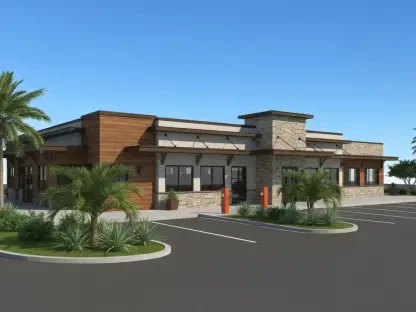The Lodging Conference has recently showcased the complex yet dynamic landscape of the U.S. hotel industry, highlighting both the challenges and opportunities in the current economic climate. Industry professionals exhibited cautious optimism influenced by the Federal Reserve’s recent decision to lower interest rates, which many see as a positive measure against the backdrop of prior rate hikes and ongoing inflation. However, despite the hopeful outlook, uncertainties such as the approaching election and geopolitical tensions continue to temper the overall sentiment. The conference provided a platform for elucidating these concerns and shared strategies adopted by hoteliers to navigate the intricate market conditions.
Top-line performance in the hotel industry shows signs of stabilization, though profit margins are increasingly pressured by escalating operational costs, particularly labor expenses. Many operators are directing their efforts toward cost-efficiency measures to preserve their profitability. High construction costs pose another substantial challenge, contributing to a decreased rate of new hotel developments. This reduction in new supply offers a modicum of balance in the supply-demand dynamic, as few new properties will enter the market in the immediate future. Consequently, attention is being shifted toward optimizing the performance of existing assets.
Strategic Rebranding and Repositioning
With major new hotel developments unlikely to materialize in the near term, industry stakeholders are increasingly concentrating on the rebranding and repositioning of current properties to generate better revenue streams. Several prominent hospitality franchisors, including Hilton, Hyatt, IHG, and Marriott, have introduced new conversion offerings tailored mainly for midscale hotel owners. These initiatives provide an avenue for property owners to align with well-recognized brands, potentially enhancing their revenue and market positioning. The decision to rebrand or reposition is highly dependent on the specific performance metrics of each asset and prevailing market circumstances. This shift indicates a strategic pivot from expansive new developments to maximizing the potential of already existing properties.
Owners face a delicate balance when opting to rebrand; while it offers potential increases in revenue through better market alignment and improved customer recognition, the costs associated with rebranding can be substantial. Many property owners are meticulously evaluating their assets to determine whether the long-term benefits of rebranding justify the initial cost outlay. This strategic evaluation is crucial for maintaining profitability, as miscalculations can lead to financial strain. The process also involves ensuring that the newly branded property aligns with customer expectations and market demands, highlighting the need for comprehensive market research and a clear understanding of consumer trends.
Cost-Efficiency and Profitability Concerns
As operational expenses rise, particularly concerning labor costs, many hotel operators are honing their focus on cost-efficiency strategies to safeguard their profit margins. Labor costs have been a significant pressure point, prompting hoteliers to explore innovative solutions for workforce management and operational efficiency. Technological advancements, such as automation and digital workforce management tools, are being increasingly adopted to minimize costs while maintaining service quality. By leveraging these technologies, hotels can streamline operations, reduce labor dependency, and improve overall efficiency.
Alongside labor costs, high construction expenses are markedly curbing new hotel developments. These elevated costs have made new projects financially unviable for many investors, resulting in a limited increase in new supply. This constrained growth somewhat stabilizes the supply-demand balance, albeit creating challenges for developers looking to expand their portfolios. In response, many industry stakeholders are directing their resources toward enhancing existing assets rather than embarking on new projects. This trend of optimizing current holdings reflects an industry adapting to its economic realities, focusing on sustainability and long-term stability.
Future Outlook and Strategic Focus
The recent Lodging Conference highlighted the multifaceted nature of the U.S. hotel industry, emphasizing both obstacles and potential in the current economy. Industry experts expressed cautious optimism, buoyed by the Federal Reserve’s decision to cut interest rates. Despite the positive sentiment from this move, which counters previous rate hikes and persistent inflation, lingering concerns such as the upcoming election and geopolitical issues continue to dampen the overall outlook. The conference served as a forum to address these issues and discuss strategies that hoteliers are employing to navigate the complex market conditions.
Hotel industry performance indicators suggest stabilization, but profit margins are being squeezed by rising operational costs, especially in labor. Many hotel operators are focusing on cost-efficiency measures to maintain profitability. Meanwhile, high construction expenses are curbing new hotel developments, slowing the rate at which new properties are entering the market. This slowdown provides a slight balance in supply and demand, allowing many to shift their focus toward enhancing the performance of existing assets.









